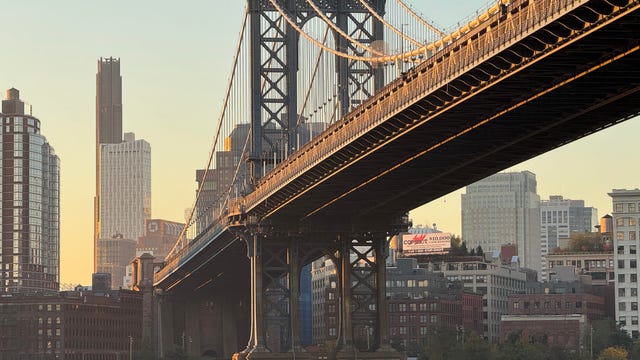Technologies
Apple iPhone Spatial Video Arrives in Beta and Looks Amazing on Vision Pro
I tried the new iPhone 15 Pro camera feature on Apple’s upcoming AR-VR headset. The 3D is undeniably vivid.
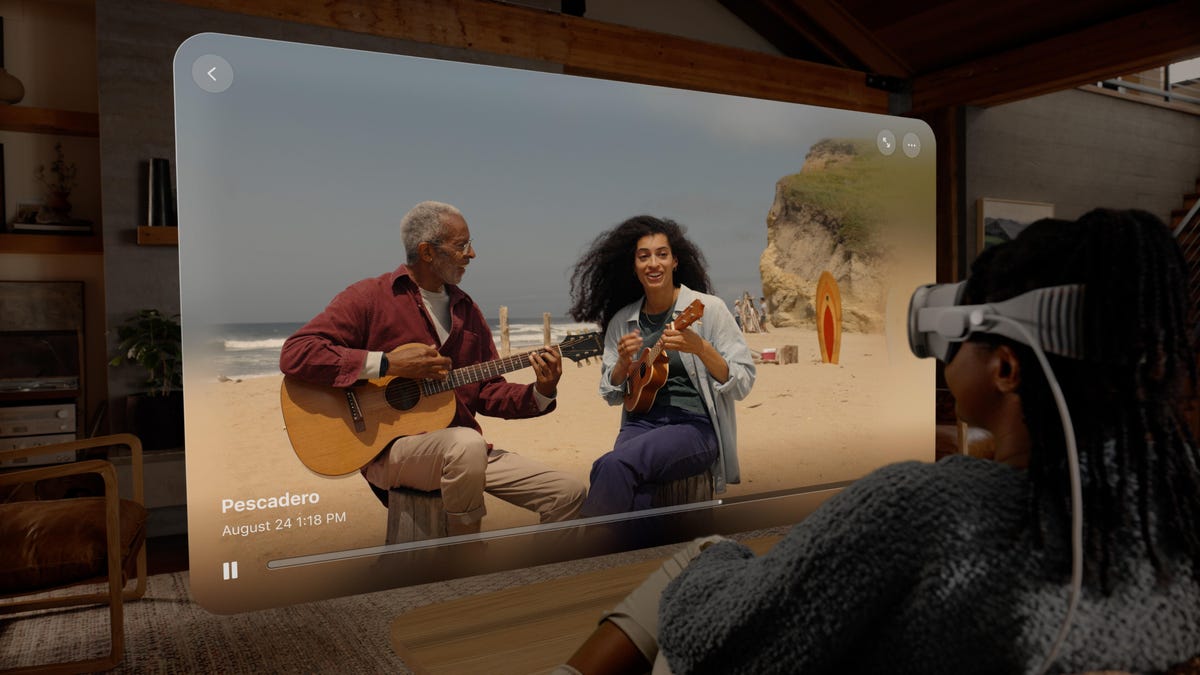
I’m looking at a plate of sushi hovering in front of me in 3D. The chef finishes off toppings on yellowtail rolls and tuna, talking to me as she works. It looks vivid. It looks real. The amazing part is that I just shot this video myself, moments earlier, on an iPhone 15 Pro. And now it’s a VR experience I’m watching in beautiful 3D on Apple’s Vision Pro headset.
I swipe with my fingers and watch other ghostly videos Apple provided. Families in a home, walking through grass. Cuddling together. All in lifelike 3D. I feel like I’m peeking in on their lives, which is weird and intimate. But the vividness is undeniable.
I’m experiencing Apple’s new Spatial Video iPhone camera feature, now available in Apple’s new iOS 17.2 public beta, with the final version rolling out in 17.2 later this year. It allows you to record 3D videos, but to use it you’ll need Apple’s best phone, the $1,000 iPhone 15 Pro. And to watch the videos in 3D you’ll need the $3,500 Vision Pro headset, which launches early next year.
The videos look great and the 3D is compellingly realistic. They’re also easy to record, and can save as videos that will play back in 2D in a normal video format. But ultimately this feature is made for a 2024 product that, at $3,500, it’s safe to say most people won’t buy anytime soon. Still, the experience is impressive.
Vision Pro impressed me once again
I first used the Vision Pro at Apple’s WWDC conference in June, and once again I’m reminded of its extraordinary display capabilities. Photos and video look fantastic on Apple’s headset. I’d even venture to say the Vision Pro beats any display I have anywhere in my home right now. Yes, I’d want to look at videos and photos — 3D and otherwise — if I had a Vision Pro.
My second dive into the Vision Pro, complete with fitted prescription lenses that matched my needs, reminds me how much smaller the headset was than I remembered. And also, how effortless the interface is.
Setting up eye tracking was a rapid process; I looked at dots around a circle and tapped them. I also tried a new set of zoom gestures, pinching my fingers and stretching them to expand photos. The gesture works with eye tracking, so wherever I looked, the image expanded. It felt like telepathy. I got to look through a few test photos in the Photos app, and play back photos in Memories. After having used a Quest 3 recently, Apple’s passthrough cameras and display resolution are on another planet.
Panoramic photos were a surprise. They opened up and wrapped around me, felt like windows into other places — almost 3D, in fact. And spatial videos look nice, too. Their 3D, almost ghostly playback quality feels like it’s aiming for an immersive memory more than a straight-up video playback. But I found some limits even in my brief demo of the experience.
Unfortunately, there aren’t any captures of what I saw or recorded here: the photos are all ones Apple provided, so you’ll have to just follow along and read about my experience.

Spatial videos on iPhone 15 Pro: How they work
Spatial videos need to be recorded by holding the phone horizontally. The iPhone 15 Pro uses its main and ultrawide cameras side-by-side in landscape mode to create the 3D video. It records two 1080p, 30fps videos at once, resolving the lens and distance differences with computational photography. The file is saved in HEVC format, similar to other Apple video files, with a storage size of about 130MB a minute. That’s not too bad, likely because the files are limited to that relatively low 1080p and 30fps resolution and framerate.
Spatial video clips can be shared via Messages or AirDrop, but there could be cases where files are compressed down in other apps, losing the 3D data. Still, the video clips should be usable anywhere as an everyday video file, which is great news for anyone who wondered (myself included) whether you’d have to choose a «special» 3D video format.
You do have to toggle Spatial Video mode on, either inside Apple’s Camera app settings or with a Vision Pro-mask-shaped toggle in the Camera app itself. That limits your video resolution and frame rate, and also means you have to shoot in landscape. Sorry, no 3D vertical videos.
The camera app makes recommendations on turning the camera sideways, and staying a certain distance from a subject. I was told to stay within 3 to 8 feet of what I was shooting for a good spatial video, but when I shot my test recording of someone making sushi at a table I got up closer and it looked perfectly fine. I also recorded in a well-lit room, but apparently the spatial video recording mode prevents adjustments on brightness and contrast, which means low-light recording may end up grainier than normal videos.
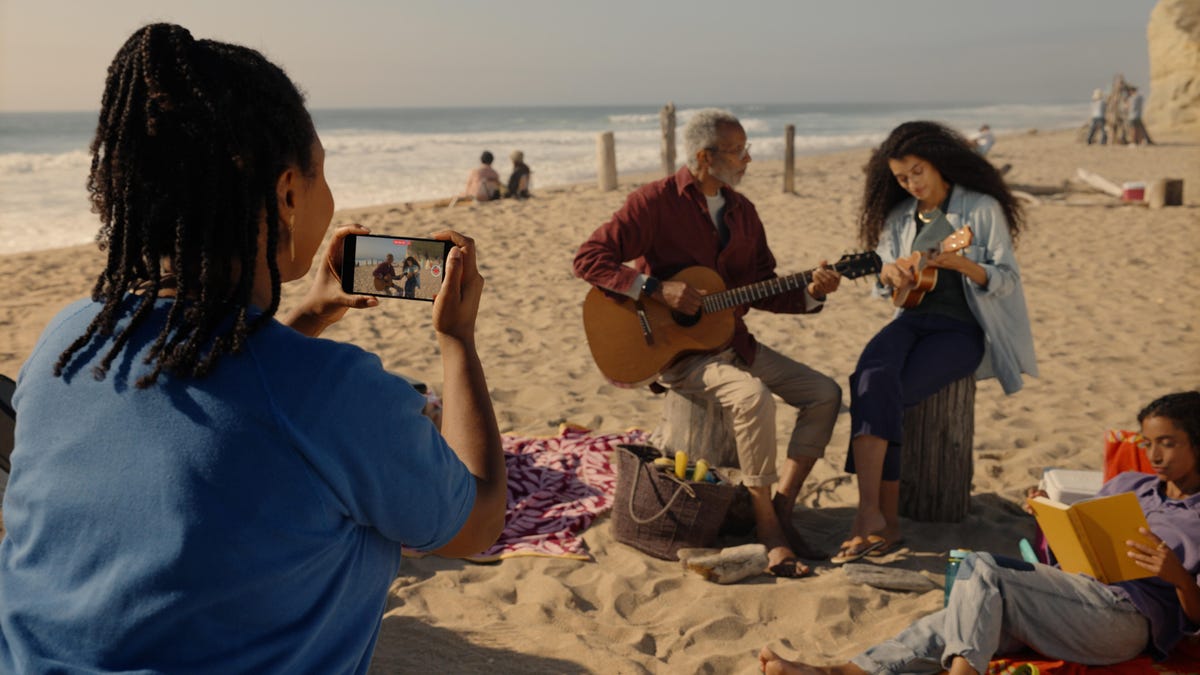
How will spatial video evolve or be edited?
There’s no API for Apple’s 3D HEVC video format, which means the files are not designed so that third-party apps can recognize them yet. But it’s possible app developers will figure out some sort of a solution. Also, it’s disappointing that there’s no other way to view the videos in 3D than on a Vision Pro.
The stereo 3D recording theoretically sounds like a process that could be adapted for other VR headsets like the $500 Meta Quest 3. It’s straightforward stereo video, and doesn’t use lidar or depth sensing for any sort of full-movement spatial capture. Unfortunately that’s not currently in Apple’s plans.
There’s no recording limit on the videos, so you could theoretically make a spatial video 3D feature-length film. But the clips will only be able to be trimmed, either in the iPhone or Vision Pro. Final Cut Pro, Apple’s video editing software, will get Spatial Video editing support, but not until sometime next year. Meanwhile if you do end up trying to edit these video files in a Mac or iOS video editor, they’ll end up being converted over into 2D-only files.
It’s also a tiny bit disappointing that the videos can’t be recorded in 4K resolution. Apple’s Vision Pro headset has astounding quality and resolution, which became clear once again as I looked at iPhone photos in the headset and zoomed in on them, or viewed panoramic photos in a wraparound mode that made it feel like I was in a vivid immersive recreation of a location, similar to a 360-degree photo. The spatial videos look really nice, but I felt the desire to see them in more fluid 60fps, 4K or both. Maybe someday.
Memories for a 3D future
Apple often seems like it’s trying to become not just a lifestyle, but a memory company. Automated photo collections are already called «Memories.» And that’s how 3D spatial videos feel on Vision Pro: hazily bordered, like digital recollections in some Minority Report or Bladerunner future. It reminded me, too, of some of the immersive 3D realism I had using Google’s real-time 3D light field conversations in Project Starline, but in this case I was just watching videos.
Apple’s choice to frame the spatial videos in a fuzzy sort of frame makes it look more like the videos are almost holographically being cast into the room, and the edges sort of dissolve a bit. But I’d love to see a way for the videos to have a standard frame around them, too.
Apple’s spatial video format shows up in a new category of its own on the Photos app, and won’t show up in Memories yet. Maybe this new spatial video tab in Photos becomes the go-to repository for new 3D experiences. Right now, Apple isn’t allowing 3D spatial photos on the iPhone 15 Pro, just videos, although the Vision Pro can capture photos itself. But Apple’s clearly aiming for everyone to hopefully start recording in the format before the headset arrives, building a library of capable videos.
That means you’ll have to remember to toggle spatial video on, and care to use it. Future Vision Pro owners will have that feature toggled on by default on the iPhone 15 Pro, but that’s a tiny portion of iPhone owners. I’ll be turning it on, because I want to see what my videos will look like next year on a Vision Pro. But unless you’re planning on buying a Vision Pro yourself, there’s little reason to record spatial video now, even though it’s possible, someday way down the road, you might regret not shooting that birthday party footage in 3D. I’m already thinking about I shot video footage at my niece’s bat mitzvah last week, and what it would have been like if I could see it in 3D, too. That new spatial video camera toggle is already playing on my future FOMO.
Technologies
How to Get the Most Out of Apple AirTags: A Comprehensive User Guide
Apple’s tiny trackers have become invaluable additions for travel as well as keeping tabs on everyday items. Here’s how to make them work best for you.
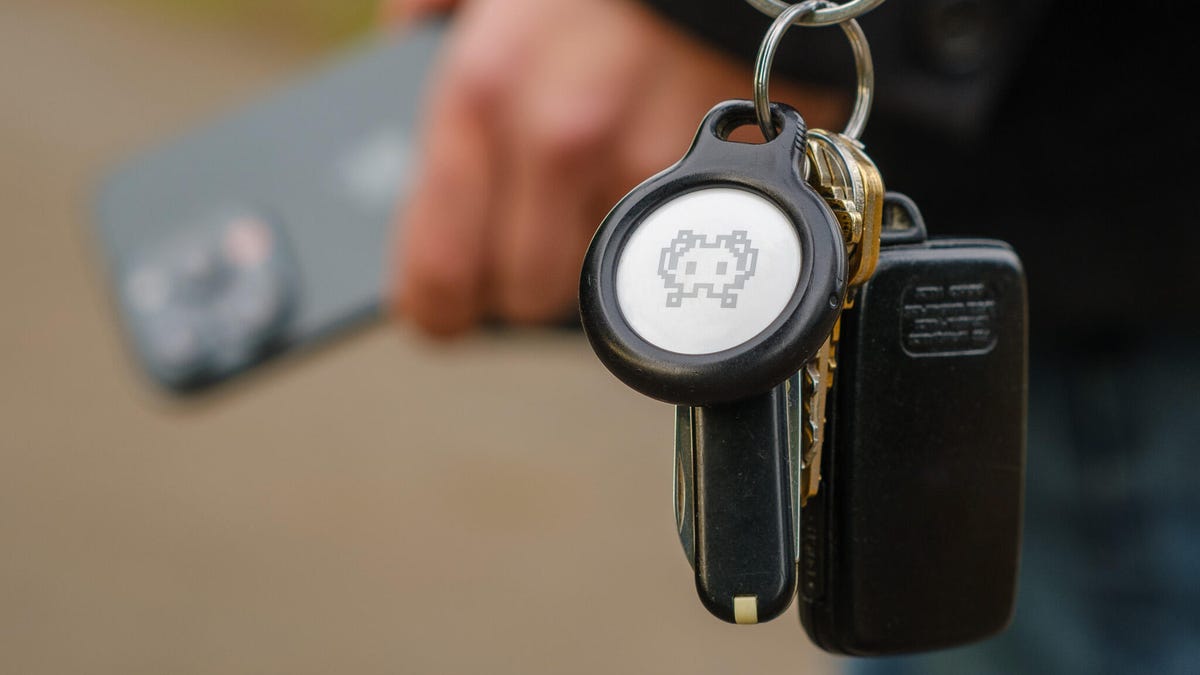
The last thing you want to deal with when traveling is lost luggage. In the past, you were at the mercy of the overburdened airlines to find a missing bag, but that’s all changed now. I consider Apple AirTags essential everyday items — small enough to stash in a bag or purse, battery life you can forget about for months and able to give you peace of mind when something goes missing, even if that’s just your keys inside the house.
Apple’s portable Bluetooth trackers are quickly becoming nearly ubiquitous. They’re so popular that major airports and airlines are now plugged in to Apple’s Find My service and can help you pinpoint a bag that could be wending its way through an airport’s luggage system or was left behind where you started your trip.
I already use Apple’s Find My service to keep tabs on devices, such as the iPad I frequently leave in my living room, as well as where family members are via their iPhones. For other items like my keys and everyday bag, I’ve come to rely on several Apple AirTags that fit into or onto almost anything I want to track. Apple’s tracker depends on the crowdsourced Find My network to help you pinpoint your items, from keys you’ve misplaced at home to a bag you may have left in the office.
Here’s all you want to know about AirTags. For more, learn about why you shouldn’t put an AirTag on a pet and discover five unexpected places to stash an AirTag.
What’s an Apple AirTag?
An AirTag is an individual tracking device that securely broadcasts its location using Bluetooth wireless networking. It’s a small glossy white puck not much larger than a US quarter and about the height of three stacked coins. A CR2032 coin cell battery keeps the AirTag powered for roughly a year.
Once the AirTag is paired with an iPhone or iPad, you can essentially forget about it. Hang it on a keychain or drop it into a bag —anything you want to be able to track or find later.
How much do AirTags cost and where can I buy them?
A single AirTag retails for $29 direct from Apple, and can be bought for around $24 from most outlets that sell electronics.
However, it’s always more economical to buy AirTags in packs of four — once you find a use for a solitary AirTag you’ll soon think of other things you want to track. Apple sells the set for $99 and some retailers, such as Amazon
, Best Buy and Walmart, have them for around $75, bringing the per-item cost down below $20. AirTags are also frequently reduced for big sales such as Black Friday and Prime Day.
If you do order from Apple, you can engrave initials, numbers and emoji for free, which can help you tell the AirTags apart (or just add a personal spin).
Is it difficult to set up a new AirTag?
In typical Apple fashion, activating a new AirTag is easy. Initially, a plastic tab slipped in between the electronics and battery keeps the AirTag inert. Once you pull that tab and the pieces make contact, the AirTag starts broadcasting its presence. When you bring it close to an iPhone or iPad, a dialog box appears, giving you the option to connect the AirTag.
When you tap Connect, choose a description of what the tag will be associated with, such as «Handbag» or «Luggage»; you can also enter a custom name. Choose an emoji to represent the AirTag in the Find My app and tap Continue. The AirTag is linked to your Apple ID.
How do I locate an AirTag?
In the Find My app on your iPhone, iPad or Mac, tap the Items button to view the AirTags you’ve activated. On an Apple Watch, open the Find Items app.
Tap the item you want to locate. If you think it’s close by, the easy option is to tap the Play Sound button, which makes the AirTag emit a high-pitched trill. However, if you have an iPhone 11 or later (not counting the iPhone SE), tapping Find uses the iPhone’s Ultra Wideband (UWB) chip to locate the AirTag with more precision —not just estimating the distance, such as «1.5 ft nearby,» but also point you in the right direction as you move around.
If the item is not in your general vicinity, the Find button becomes a Directions button that will hand off the location to the Maps app for driving, walking, transit or cycling routes.
What if I forget items while I’m heading out?
Being able to find something I’ve lost is invaluable, but it would be better if I didn’t forget it in the first place. For every AirTag, you can enable Notify When Left Behind, an option that sends a notification if you and an AirTag that was with you are no longer together.
That could be as simple as forgetting a bag at a restaurant or — more alarming —if someone swiped the item and is making a getaway.
What’s the secret to how AirTags work?
You know how in many thrillers and spy movies someone plants a tracker on a person and is then able to pinpoint the target’s location no matter where they are? That always seemed far-fetched to me — what sort of range would a tiny piece of electronics have, really? — but an AirTag is essentially that.
The AirTag itself does not have that sort of range, but it has something better: millions of devices carried by Apple customers surrounding it. On a regular interval, the AirTag sends out a low-power Bluetooth signal containing an encrypted ID. Any nearby iPhone, iPad or Mac picks up the signal, adds its location coordinates (if it knows them) and sends that to Apple servers in a secure background transmission.
That’s how, when my luggage chose to spend an extra day in Europe without me, I knew it was still in the airport in France. Likely an iPhone owned by a traveler or employee picked up the ID of the AirTag in my bag and relayed that to Apple. When I opened the Find My app on my iPhone in Seattle, it queried the servers and presented the AirTag’s last known location.
All of this happens in the background — no personal information is sent, and the impact to the relaying device’s performance and battery is negligible.
What about privacy? Can a hidden AirTag track me?
Just as you can use an AirTag to track your personal objects, it is possible that someone could drop an AirTag into your bag or coat pocket to try to track your movements. Apple has put a few safeguards in place to try to prevent that type of situation.
If your iPhone or iPad detects an unknown AirTag in your vicinity that is persistently near you, a notification appears that says «AirTag Found Moving With You.» When you ransack your belongings and find it, open the Find My app on your iPhone or iPad, tap Items and then tap Identify Found Item. Place the AirTag against the back of the device at the top until you see a notification. When you tap that, you’re taken to a web page with the tag’s serial number and, optionally, contact information.
If it turns out a family member’s AirTag fell out of a bag, no worries. If it’s one that’s unfamiliar, you can follow instructions for how to disable the tag.
For more, see how to protect yourself from being tracked.
What if I suspect that my AirTag is stolen?
You’ve looked everywhere, used the Find feature to scan for it, but your item containing an AirTag is nowhere to be found. Now what?
In the AirTag’s details in the Find My app, scroll down to Lost AirTag and tap Show Contact Info. If someone finds the tag and checks it as described just above, you can have a phone number or email displayed, plus an optional message, when they look up its information.
The other option is to choose Share Item Location, which creates a link you can send to someone identifying where the tag is. The link is active for just one week, which is hopefully more than enough time to let someone track it down. For example, suppose your bag is swiped: You could give the shared link to the police so they can track it down. (For safety reasons, don’t confront someone who’s stolen your property.)
When the item and its AirTag are returned, a notification appears that you’ve been reunited. Or, you can make the tag’s whereabouts hidden at any point by tapping Stop Sharing Item Location in the same screen, which invalidates the shared link.
How can I share an AirTag with someone I trust?
An AirTag is linked to your Apple Account, but for years that presented a problem: AirTags assigned to other people in my household would trigger the «AirTag Found Moving With You» warning — not great on family trips when we’d take my wife’s car.
Now, fortunately, it’s possible to share an AirTag’s location with up to five people. Tap a tag in the Find My app and under Share AirTag tap Add Person. Tap Continue on the screen explaining what will happen, then select a contact and tap Share.
In that person’s Find My app, they can accept the shared item. Note that all people you add can track the location.
How long does the battery last and how do I replace it?
In my experience, the CR2032 coin battery in each AirTag lasts about a year. When the level dips below about 10% remaining, you’re alerted that the battery is low and a red indicator appears in the Find My app.
To replace the battery, turn the silver back counter-clockwise to release its latches. Lift the existing battery out and replace it with a new one, making sure the battery’s identifying markings are facing you. Then align the tabs of the metal portion with the slots in the plastic piece, press lightly and turn clockwise. The AirTag will chirp when the electronics and battery are securely in contact.
Can I use AirTags with an Android phone?
AirTags are not directly compatible with Android phones — there’s no app that ties into Apple’s Find My network. To get the same tracking functionality, look into the Chipolo One Point tracker that uses Google’s Find My Device network.
Apple once offered an Android app called Tracker Detect that would let you identify a found AirTag, but that’s not available for newer Android devices — an app with that name in the Google Play store is from a separate developer. However, for phones with NFC chips installed, you can place a found AirTag against the back of the device to view information about it.
For more, learn about this year’s best AirTag accessories and everything about Apple Intelligence.
Technologies
Today’s NYT Connections Hints, Answers and Help for Nov. 15, #888
Here are some hints — and the answers — for the NYT Connections puzzle for Nov. 15, #888.

Looking for the most recent Connections answers? Click here for today’s Connections hints, as well as our daily answers and hints for The New York Times Mini Crossword, Wordle, Connections: Sports Edition and Strands puzzles.
Today’s NYT Connections puzzle includes some tricky words. If you need help sorting them into groups, you’re in the right place. Read on for clues and today’s Connections answers.
The Times now has a Connections Bot, like the one for Wordle. Go there after you play to receive a numeric score and to have the program analyze your answers. Players who are registered with the Times Games section can now nerd out by following their progress, including the number of puzzles completed, win rate, number of times they nabbed a perfect score and their win streak.
Read more: Hints, Tips and Strategies to Help You Win at NYT Connections Every Time
Hints for today’s Connections groups
Here are four hints for the groupings in today’s Connections puzzle, ranked from the easiest yellow group to the tough (and sometimes bizarre) purple group.
Yellow group hint: Yum!
Green group hint: Grammar time.
Blue group hint: They win Oscars and Tonys.
Purple group hint: Think DMZ.
Answers for today’s Connections groups
Yellow group: Enhance the taste of.
Green group: Punctuation marks.
Blue group: Kinds of actors.
Purple group: ____ zone.
Read more: Wordle Cheat Sheet: Here Are the Most Popular Letters Used in English Words
What are today’s Connections answers?
The yellow words in today’s Connections
The theme is enhance the taste of. The four answers are flavor, salt, season and spice.
The green words in today’s Connections
The theme is punctuation marks. The four answers are colon, dash, period and slash.
The blue words in today’s Connections
The theme is kinds of actors. The four answers are character, film, method and stage.
The purple words in today’s Connections
The theme is ____ zone. The four answers are buffer, comfort, time and twilight.
Technologies
Today’s NYT Connections: Sports Edition Hints and Answers for Nov. 15, #418
Here are hints and the answers for the NYT Connections: Sports Edition puzzle No. 418 for Saturday, Nov. 15.
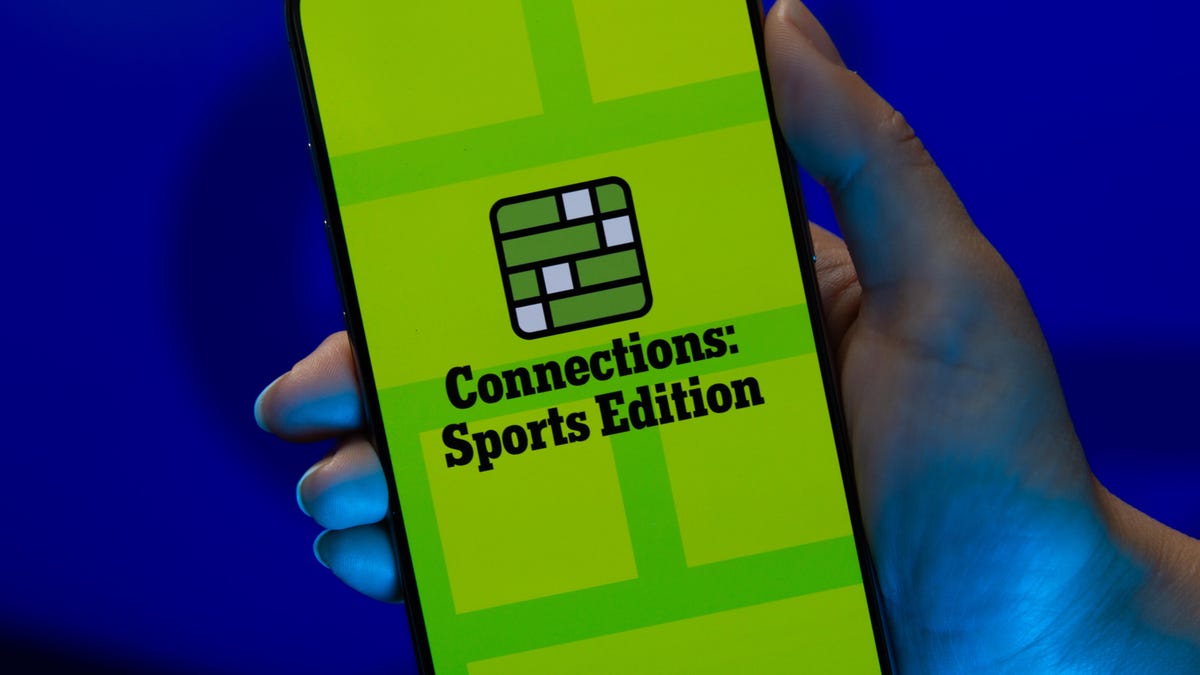
Looking for the most recent regular Connections answers? Click here for today’s Connections hints, as well as our daily answers and hints for The New York Times Mini Crossword, Wordle and Strands puzzles.
Today’s Connections: Sports Edition is a fun one. Not really sure what the yellow category has to do with sports, but OK, whatever. If you’re struggling but still want to solve it, read on for hints and the answers.
Connections: Sports Edition is published by The Athletic, the subscription-based sports journalism site owned by the Times. It doesn’t show up in the NYT Games app but appears in The Athletic’s own app. Or you can play it for free online.
Read more: NYT Connections: Sports Edition Puzzle Comes Out of Beta
Hints for today’s Connections: Sports Edition groups
Here are four hints for the groupings in today’s Connections: Sports Edition puzzle, ranked from the easiest yellow group to the tough (and sometimes bizarre) purple group.
Yellow group hint: Keeps your head warm.
Green group hint: Nothing but net!
Blue group hint: College signal-callers.
Purple group hint: It’s a bird! It’s a plane!
Answers for today’s Connections: Sports Edition groups
Yellow group: Headgear.
Green group: A score in basketball.
Blue group: First names of SEC QBs.
Purple group: Super ____.
Read more: Wordle Cheat Sheet: Here Are the Most Popular Letters Used in English Words
What are today’s Connections: Sports Edition answers?
The yellow words in today’s Connections
The theme is headgear. The four answers are balaclava, cap, hat and visor.
The green words in today’s Connections
The theme is a score in basketball. The four answers are basket, bucket, field goal and make.
The blue words in today’s Connections
The theme is first names of SEC QBs. The four answers are Arch, Diego, Trinidad and Ty.
The purple words in today’s Connections
The theme is super ____. The four answers are flex, Sonics, speedway and star.
-

 Technologies3 года ago
Technologies3 года agoTech Companies Need to Be Held Accountable for Security, Experts Say
-

 Technologies3 года ago
Technologies3 года agoBest Handheld Game Console in 2023
-

 Technologies3 года ago
Technologies3 года agoTighten Up Your VR Game With the Best Head Straps for Quest 2
-

 Technologies4 года ago
Technologies4 года agoBlack Friday 2021: The best deals on TVs, headphones, kitchenware, and more
-

 Technologies4 года ago
Technologies4 года agoVerum, Wickr and Threema: next generation secured messengers
-

 Technologies4 года ago
Technologies4 года agoGoogle to require vaccinations as Silicon Valley rethinks return-to-office policies
-

 Technologies4 года ago
Technologies4 года agoOlivia Harlan Dekker for Verum Messenger
-

 Technologies4 года ago
Technologies4 года agoiPhone 13 event: How to watch Apple’s big announcement tomorrow

